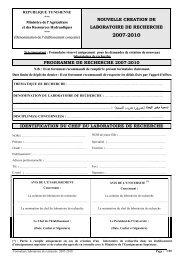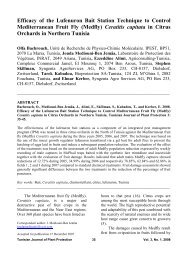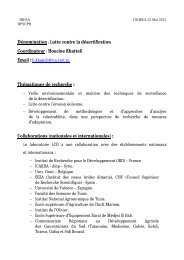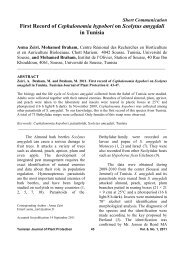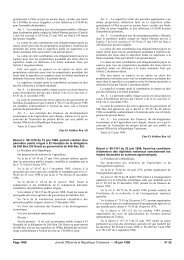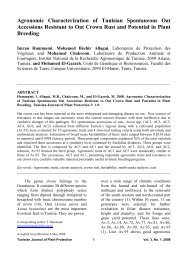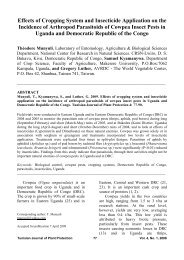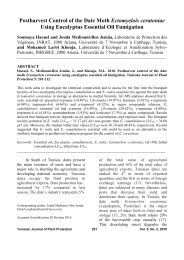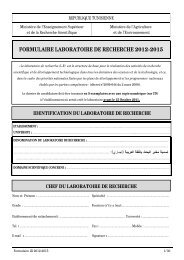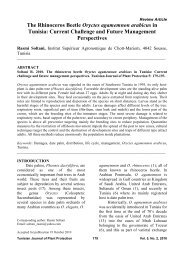Azoxystrobin Activity on Rhizoctonia solani and its Efficacy ... - Iresa
Azoxystrobin Activity on Rhizoctonia solani and its Efficacy ... - Iresa
Azoxystrobin Activity on Rhizoctonia solani and its Efficacy ... - Iresa
Create successful ePaper yourself
Turn your PDF publications into a flip-book with our unique Google optimized e-Paper software.
foliar applicati<strong>on</strong> of azoxystrobin<br />
effectively c<strong>on</strong>trol the diseases incidence<br />
like the agents of southern stem rot<br />
(Sclerotium rolfsii), head blight (Fusarium<br />
graminearum), <strong>and</strong> leather rot<br />
(Phytophthora cactorum) (14, 5, 13).<br />
<str<strong>on</strong>g>Azoxystrobin</str<strong>on</strong>g> means recovery from<br />
three fortified (0.05, 0.1 <strong>and</strong> 0.2 ppm) rice<br />
matrices (grain, straw, husk <strong>and</strong> bran) were<br />
86.96%, 84.71% <strong>and</strong> 82.36%, respectively<br />
(Table 3). Therefore, under the specified<br />
c<strong>on</strong>diti<strong>on</strong>s no interfering peaks were<br />
observed <strong>on</strong> the chromatogram of the<br />
samples. The instrument did not detect<br />
residues of azoxystrobin even at the<br />
highest applied c<strong>on</strong>centrati<strong>on</strong>. Then, we<br />
can suppose that the residues of<br />
azoxystrobin in rice matrices were below<br />
the limit of detecti<strong>on</strong> of the instrument<br />
(0.004 µg/g of sample). C<strong>on</strong>sidering the<br />
U.S. Envir<strong>on</strong>mental Protecti<strong>on</strong> Agency<br />
(EPA), the maximum residue lim<strong>its</strong><br />
(MRLs) for azoxystrobin in rice grain,<br />
straw <strong>and</strong> hulls are, respectively 5, 12 <strong>and</strong><br />
20 ppm (7). Therefore, it seems that<br />
azoxystrobin in our trials was rapidly<br />
metabolized in rice plants. Chen et al. (2)<br />
obtained a similar result in Chinese<br />
cabbage. Hence, foliar applicati<strong>on</strong> of<br />
azoxystrobin to c<strong>on</strong>trol sheath blight is<br />
very unlikely to cause acute <strong>and</strong> chr<strong>on</strong>ic<br />
health risk.<br />
Table 3. Recovery percentage of azoxystrobin in fortified rice samples<br />
Rice matrice<br />
<str<strong>on</strong>g>Azoxystrobin</str<strong>on</strong>g> recovery (%)<br />
0.05 ppm 0.1 ppm 0.2 ppm<br />
Mean<br />
recovery<br />
(%)<br />
Recovery<br />
factor<br />
(RF)<br />
Grains 80.12 82.86 97.91 86.96 1.15<br />
Straw 85.12 81.32 87.69 84.71 1.18<br />
Bran & Husk 80.00 84.90 82.18 82.36 1.21<br />
* Determinability of the instrument = 0.004 µg/g of sample.<br />
____________________________________________________________________________<br />
RESUME<br />
Sundravadana S., Alice D., Kuttalam S., et Samiyappan R. 2007. Activité de l’azoxystrobine sur<br />
Rhizoct<strong>on</strong>ia <strong>solani</strong> et s<strong>on</strong> efficacité c<strong>on</strong>tre la brûlure de la gaine foliaire du riz. Tunisian Journal of<br />
Plant Protecti<strong>on</strong> 2: 79-84.<br />
La brûlure de la gaine foliaire, causée par Rhizoct<strong>on</strong>ia <strong>solani</strong>, est l’une des principales maladies du riz.<br />
Nous av<strong>on</strong>s étudié l’effet de l’azoxystrobine sur la croissance in vitro de R. <strong>solani</strong> et s<strong>on</strong> efficacité c<strong>on</strong>tre<br />
cette maladie en plein champ. Les résultats <strong>on</strong>t révélé que l’azoxystrobine à 1, 2 et 4 ppm, inhibe<br />
complètement la croissance mycélienne de R. <strong>solani</strong>. L’étude au champ a m<strong>on</strong>tré que la pulvérisati<strong>on</strong><br />
foliaire de l’azoxystrobine à 125, 250 et 500 g/ha supprime significativement (> 64%) le développement<br />
de la brûlure de la gaine foliaire et augmente le rendement (> 60%). Pour c<strong>on</strong>trôler cette maladie, la dose<br />
optimale d’azoxystrobine était de 125 g/ha. Nos résultats <strong>on</strong>t indiqué aussi qu’il n’y avait pas de résidus<br />
dans les plantes du riz au moment de la récolte et pas de phytotoxicité avec la plus haute c<strong>on</strong>centrati<strong>on</strong><br />
d’azoxystrobine (500 g/ha).<br />
Mots clés : <str<strong>on</strong>g>Azoxystrobin</str<strong>on</strong>g>e, brûlure de la gaine foliaire, croissance mycélienne, lutte chimique, résidus,<br />
Rhizoct<strong>on</strong>ia <strong>solani</strong>, riz<br />
_____________________________________________________________________________<br />
Tunisian Journal of Plant Protecti<strong>on</strong> 82<br />
Vol. 2, No. 2, 2007




